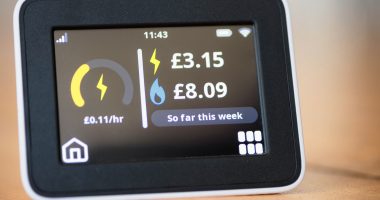
Motorists are facing a ‘relentless’ increase in fuel costs as figures today confirmed a ninth consecutive month of price increases at the pumps.
Petrol rose another 3.4p-a-litre in July while diesel was up 2.7p per litre, says the latest RAC Fuel Watch report published on Wednesday.
The jump in petrol price is the biggest posted in a single month since January and means that, on average, a litre of unleaded now costs 135.1p – up from 131.8p at the start of the month, and a price not seen since late September 2013.
It also means that petrol is now 21.1p-a-litre more expensive than it was in November and means an average 55-litre fuel tank is now £11.60 pricier than it was nine months ago.


Relentless rise at the pumps: A new fuel price report has revealed that the cost of petrol has increased for a ninth consecutive month and is now higher than it’s been since September 2013
A litre of diesel now costs an average 137.1p per litre, up from 134.4p at the beginning of July.
The price rises meant that last month was the most expensive July to fill up with petrol since 2013, and for diesel since 2014.
A driver filling up a 55-litre car with petrol now pays on average £3.08 more to fill up than they did at the start of June, and £11.47 more than they did in July 2020.
The picture is barely better for diesel drivers.
Filling a similarly sized fuel tank now costs £2.90 more than at the start of June and £10.46 more than it did at the end of July 2020.
RAC fuel spokesman Simon Williams said that prices are ‘only going one way at the moment’ and escalating fuel bills has come at a time when Britons are using their cars to holiday more so than usual.
‘With a second summer staycation in full swing, it’s proving to be a particularly costly one for many families who are using their cars to holiday here in the UK,’ Williams said.
‘With so many people depending on their vehicles, there’s really nothing drivers can do to escape the high prices, and our best advice is for them to drive as economically as possible in order to try to make their money go further.’
Current petrol prices are now just 7p-a-litre shy of the record high of 142.5p posted in April 2012 and ministers have already revealed that unleaded will rise by around 0.2p per litre next month when greener E10 petrol with a higher 10 per cent bioethanol mix replaces existing 5 per cent E5 unleaded.
An impact assessment by the Government has also suggested that E10 will be less efficient than E5, meaning drivers will need to fill up more frequently – another burden on motoring bills.
The current diesel price is also just 10p-a-litre shy of the April 2012 record of 147.9p.


The price of petrol is now just 7p-a-litre shy of the record high set in April 2012 when it reached 142.5p-a-litre
With confidence building of a global recovery from the coronavirus pandemic – buoyed by progress in worldwide vaccination programmes, an easing of restrictions in many places and increases in travel and other commercial activity – demand for oil is increasing.
Although there was little overall change in the oil price from the start to the end of July, it did nearly touch the $80 a barrel mark near the beginning of the month.
As demand for oil outstrips supply, wholesale fuel prices are pushed up and drivers feel the effect every time they fill up.
The RAC says drivers should continue to visit supermarkets to find the best value fuel this summer.
The prices of a litre of petrol is around 3p cheaper compared to the average (132.3p compared to 135.1p) and more than 16p less than at motorway service areas (132.3p compared to 148.8p).
‘Right now it’s hard to see what it will take for prices to start falling again,’ Williams added.
‘While we’re not past the pandemic by any means, demand for oil is likely to continue to increase as economic activity picks up again, and this is likely to have the effect of pushing up wholesale fuel prices, costs which retailers are bound to pass on at the pumps.
‘Unless major oil producing nations decide a new strategy to increase output, we could very well see forecourt prices going even higher towards the end of the summer.’









